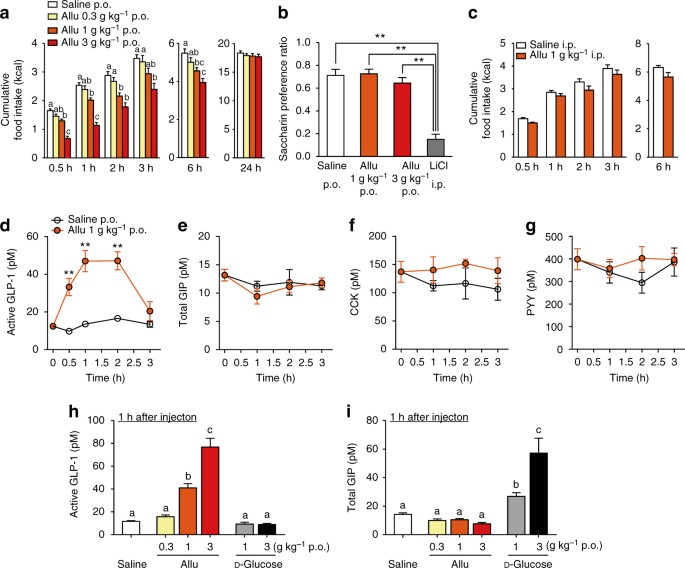If you must use a sweetener, consider trying allulose (I like Anthony's brand the best).
Allulose behaves similar to GLP-1 agonists (like Tirz peptide)... actually it causes GLP-1 release!
"Here we show that oral administration of the non-calorie sweetener, rare sugar D-allulose (D-psicose), induces GLP-1 release, activates vagal afferent signaling, reduces food intake and promotes glucose tolerance in healthy and obese-diabetic animal models."
"Our results identify D-allulose as prominent GLP-1 releaser that acts via vagal afferents to restrict feeding and hyperglycemia."
Now that I think of it, the one time I overdosed on allulose brownies, I had very similar GI issues to what people have when starting GLP-1 agonists.
STUDY LINK:

 www.nature.com
www.nature.com
Allulose behaves similar to GLP-1 agonists (like Tirz peptide)... actually it causes GLP-1 release!
"Here we show that oral administration of the non-calorie sweetener, rare sugar D-allulose (D-psicose), induces GLP-1 release, activates vagal afferent signaling, reduces food intake and promotes glucose tolerance in healthy and obese-diabetic animal models."
"Our results identify D-allulose as prominent GLP-1 releaser that acts via vagal afferents to restrict feeding and hyperglycemia."
Now that I think of it, the one time I overdosed on allulose brownies, I had very similar GI issues to what people have when starting GLP-1 agonists.
STUDY LINK:

GLP-1 release and vagal afferent activation mediate the beneficial metabolic and chronotherapeutic effects of D-allulose - Nature Communications
The sweetener D-allulose has beneficial metabolic effects in animal models, but its mechanism of action was unclear. Here the authors report that D-allulose triggers GLP-1 release in the gut and GLP-1R signaling on vagal afferents, counteracting arrhythmic overeating, obesity and diabetes.
